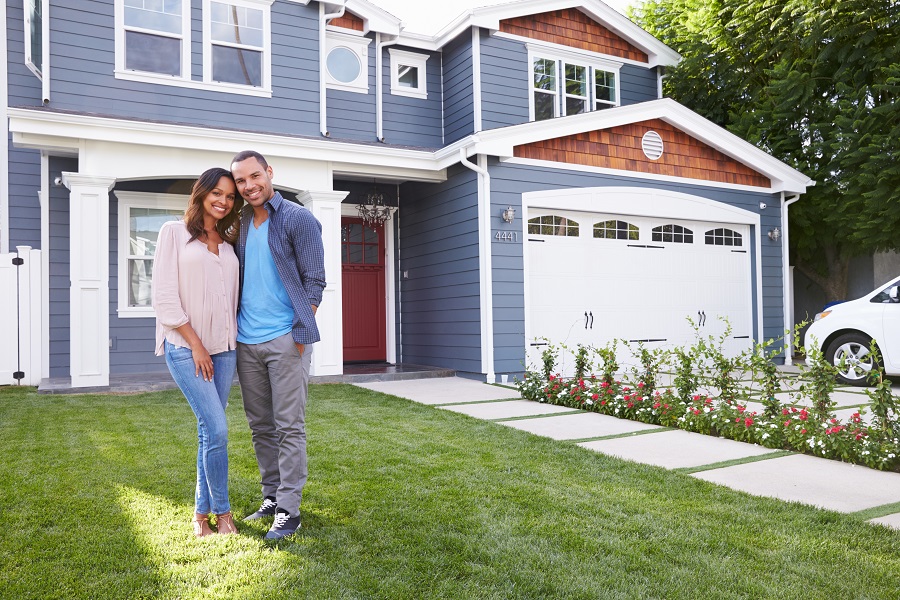Income Doesn’t Determine Whether People Buy Homes, for Now
People will continue to break into the market when and how they can by buying cheaper homes, homes farther out, smaller homes—whatever is feasible. The rub is that as U.S. housing markets continue to burn hot, the feasible options become harder to find for more of us.
There is much conversation in the media and around the water cooler about the impact of the recently enacted tax reform on housing markets. The doubling of the standard deduction, the limits on state and local tax deductions, and the cap on mortgage interest deductions all reduce the financial incentive for homeownership.
What’s important to remember is that while money is important, the decision to buy has more to do with a household’s stage of life. It’s never just about the dollars and cents – although the hot housing market has made income a bigger factor, when it comes to down payments, than it used to be.
A new analysis of homeownership rates demonstrate that point: In general, married or partnered households have higher homeownership rates than households headed by single people. Similarly, older households tend to have higher homeownership rates than younger ones.
You may think it’s because older adults often have higher incomes, because they’ve spent longer working, or because married couples tend to make more, because their households often have two earners. While those assumptions about the greater earning power of older adults and couples are true, income doesn’t significantly impact homeownership rates within any subgroup except couples under the age of 35.
For example, older couples with dual incomes take in around $44,000 more in household income than older couples with only one earner, but having a second earner increases their national homeownership rate by only one percentage point to 82 percent. Similarly, adding an additional earner to your household as a young single, whether that person is a relative or a roommate, jumps the household’s median income by about $39,000 but drops the homeownership rate by a single percentage point to 19 percent. Similarly, adding a second earner to a partnered couple over age 35 increases median income by $44,000 but homeownership by only 0.4 percentage points to 81.7 percent.
For married or partnered couples under 35, the story is different: For that group, an extra earner means a nearly $33,000 increase in median annual income and a 13 percentage point boost in the homeownership rate to 49.8 percent.
The down payment hurdle
One way income has started to affect the homeownership rate during this century involves down payments, which are much easier to save with more money flowing into the bank.
We looked at down payments two ways: One was to suppose everyone was aiming to save for the current median valued home, rather than the most expensive home they could afford.
Using rough back-of-the-envelope math, the number of years it would take to put 20 percent down by saving 10 percent of their current household income each year varies substantially by household type.
Single earners would take more than 12 years, while partners with one income would take six to 8.5 years, and partners with two incomes would take 3.6 to 4.9 years.
There’s a clear distinction in homeownership among most of the life stage groups, indicating that people at different stages of life value homeownership differently. But the income factor within those groups makes little difference. Why? From this angle, whether people buy a home or rent is dominated by life stages – but what they can afford and save for is determined by income.
Another way to look at down payments is to consider what it looks like when incomes do not keep up with home values – and, in this case, we find that incomes have made a difference in homeownership rates over time.
Let’s suppose the typical household aims to buy the most expensive house it can afford on a monthly basis[1]. Assuming they save 10 percent of their household income every year (and home values and incomes don’t change), it would take households of all types more than ten years to build up enough for a 20 percent down payment.
In 2000, by the same back-of-the-envelope math, it would have taken only seven years.
This is one reason the overall homeownership rate dropped to 63.6 percent in 2016, the most recent year for which data are available for our breakouts, from 66.2 percent in 2000. For partnered households, the rate dropped 3.3 percentage points in that time to 74.5 percent. For single households, it fell 2.1 percentage points to 50.1 percent.
Age is a major factor here: The reduction in homeownership rates is pronounced for young partnered couples with dual incomes (down 8.7 percentage points to 49.8 percent), and even more severe for young partnered households with only one income (down 12.3 percentage points to 36.8 percent). Incomes for young partnered households with one person working haven’t made up for home value gains: Between 2000 and 2016, median income for young partnered households with one person working increased by only 20.4 percent, well below the almost 53 percent increase in median income for partnered households in general.
People will continue to break into the market when and how they can by buying cheaper homes, homes farther out, smaller homes—whatever is feasible. The rub is that as U.S. housing markets continue to burn hot, the feasible options become harder to find for more of us.
[1] We estimated the maximum home price such that basic homeowners’ expenses do not exceed 30 percent of median household income. Median household income was drawn from the 2016 American Community Survey micro-data provided by IPUMS-USA, University of Minnesota, www.ipums.org. Homeowner expenses include the mortgage payment on a 30-year fixed-rate loan at prevailing mortgage rates with 20 percent down, property taxes at 1 percent of home value a year, assumed maintenance costs of 0.5 percent, and assumed homeowner’s insurance at 0.5 percent.
